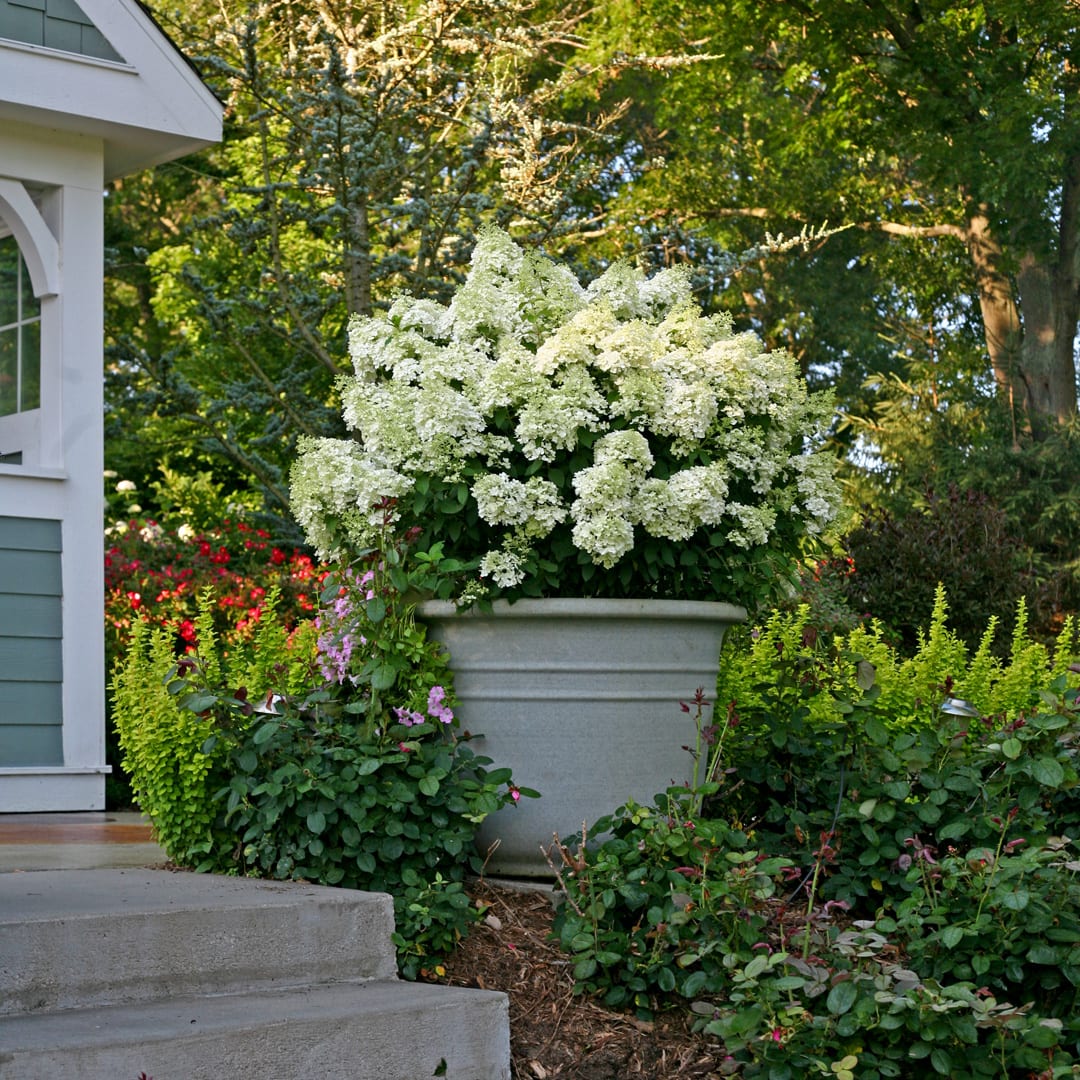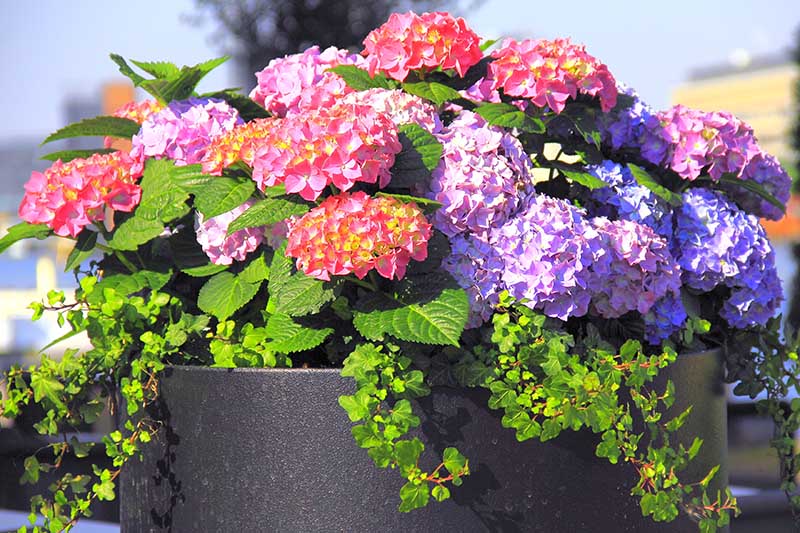How To Grow Hydrangeas In Containers Like A Pro
How to Grow Hydrangeas in Containers Like a Pro
Hydrangeas are beautiful flowering shrubs that can add a touch of elegance to any garden. They are also relatively easy to grow, making them a good choice for container gardening.
If you are thinking about growing hydrangeas in containers, there are a few things you need to keep in mind. First, you need to choose the right type of hydrangea. There are two main types of hydrangeas: mophead and lacecap. Mophead hydrangeas have large, round flower clusters, while lacecap hydrangeas have smaller, more delicate flower clusters.
Once you have chosen the type of hydrangea you want to grow, you need to choose the right container. The container should be at least 18 inches in diameter and have drainage holes. You can use any type of container, but terracotta or ceramic pots are a good choice because they help to keep the soil cool.
The next step is to fill the container with potting soil. Use a high-quality potting soil that is specifically designed for container plants. Avoid using garden soil, as it can become compacted and waterlogged.
Once the container is filled with potting soil, you can plant your hydrangea. Plant it at the same depth as it was growing in its nursery pot. Water the hydrangea thoroughly after planting.
Hydrangeas need full sun to partial shade. If you live in a hot climate, you may want to provide your hydrangea with some afternoon shade.
Hydrangeas also need regular watering. Water them deeply once a week, or more often if the weather is hot and dry.
In the spring and summer, you can fertilize your hydrangeas with a balanced fertilizer. Follow the directions on the fertilizer label.
In the fall, you can trim your hydrangeas back to about 6 inches from the ground. This will help to promote new growth in the spring.
With proper care, your hydrangeas should thrive in containers for many years.
Here are some additional tips for growing hydrangeas in containers:
- Choose a container that is the right size for the mature size of your hydrangea. A larger container will give your hydrangea more room to grow and will also help to keep the soil from drying out too quickly.
- Use a potting mix that is specifically designed for container plants. This type of potting mix will drain well and will provide your hydrangea with the nutrients it needs to thrive.
- Place your hydrangea in a location that receives full sun to partial shade. Hydrangeas that receive too much sun may develop brown leaves, while hydrangeas that receive too little sun may not bloom as well.
- Water your hydrangeas regularly, especially during hot, dry weather. Allow the top inch of soil to dry out between waterings.
- Fertilize your hydrangeas once a month during the spring and summer months. Use a balanced fertilizer that is high in nitrogen.
- Deadhead spent blooms to encourage new growth.
- Bring your hydrangea indoors for the winter if you live in a cold climate. Place it in a cool, bright location and water it sparingly.
With proper care, your hydrangeas should thrive in containers for many years.
Hydrangeas are beautiful flowering shrubs that can be grown in containers. If you're looking for a way to add some color and interest to your patio or deck, a hydrangea in a container is a great option.
There are a few things to keep in mind when growing hydrangeas in containers. First, you'll need to choose a pot that is large enough for the plant's roots. Hydrangeas have a large root system, so you'll need a pot that is at least 24 inches wide and deep. The pot should also have drainage holes to prevent the roots from sitting in water.
Second, you'll need to use a potting soil that is specifically designed for hydrangeas. This soil will have the right pH balance and drainage for your plant.
Once you've chosen the right pot and soil, you can plant your hydrangea. Water the plant well and place it in a spot that receives full sun in the morning and afternoon shade. Hydrangeas need about 6 hours of sunlight per day.
To keep your hydrangea healthy, fertilize it every few weeks with a balanced fertilizer. You can also prune your hydrangea in the spring to shape it and remove dead or damaged branches.
If you're looking for more information about growing hydrangeas in containers, I recommend visiting . This website has a wealth of information on hydrangea care, including tips on choosing the right pot, soil, and fertilizer.
FAQ of hydrangea in container
- What are the best hydrangeas to grow in containers?
There are many different types of hydrangeas, but some of the best ones to grow in containers include:
* Macrophylla hydrangeas: These hydrangeas are known for their large, showy blooms. Some popular varieties for containers include `Mini Penny`, `Miss Saori`, and `Selma`.
* Paniculata hydrangeas: These hydrangeas produce tall, conical blooms. Some popular varieties for containers include `Early Sensation`, `Little Lime`, and `Bobo`.
* Serrata hydrangeas: These hydrangeas have small, delicate blooms. Some popular varieties for containers include `Shojo` and `Quercifolia `Sike's Dwarf`.
- How big of a container do I need for a hydrangea?
The size of the container you need for a hydrangea will depend on the size of the plant. A good rule of thumb is to choose a container that is at least twice as wide and deep as the root ball of the plant.
- What type of soil do hydrangeas need?
Hydrangeas prefer a well-draining, slightly acidic soil. You can improve the drainage of your soil by adding sand or perlite. You can also add peat moss to make the soil more acidic.
- How much water do hydrangeas need?
Hydrangeas need regular watering, especially during hot, dry weather. Water your hydrangeas deeply so that the water reaches the roots.
- How much fertilizer do hydrangeas need?
Hydrangeas need to be fertilized regularly, especially during the growing season. You can use a balanced fertilizer, such as 10-10-10, or a fertilizer specifically for hydrangeas.
Image of hydrangea in container
5 different images of hydrangea in container from Pinterest:
- A white hydrangea in a terracotta pot, sitting on a wooden deck.

- A blue hydrangea in a hanging basket, cascading down over the edge.

- A pink hydrangea in a ceramic pot, surrounded by white pebbles.

- A mix of pink and blue hydrangeas in a wooden planter, on a patio.

- A white hydrangea in a glass vase, sitting on a windowsill.
Post a Comment for "How To Grow Hydrangeas In Containers Like A Pro"